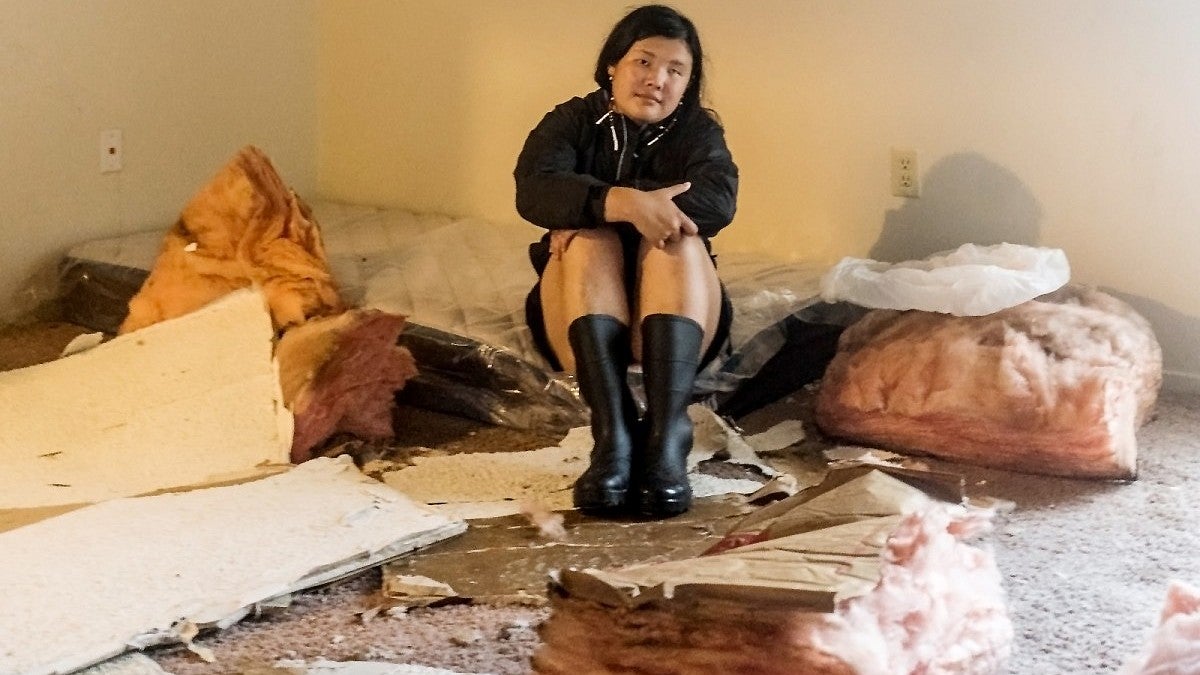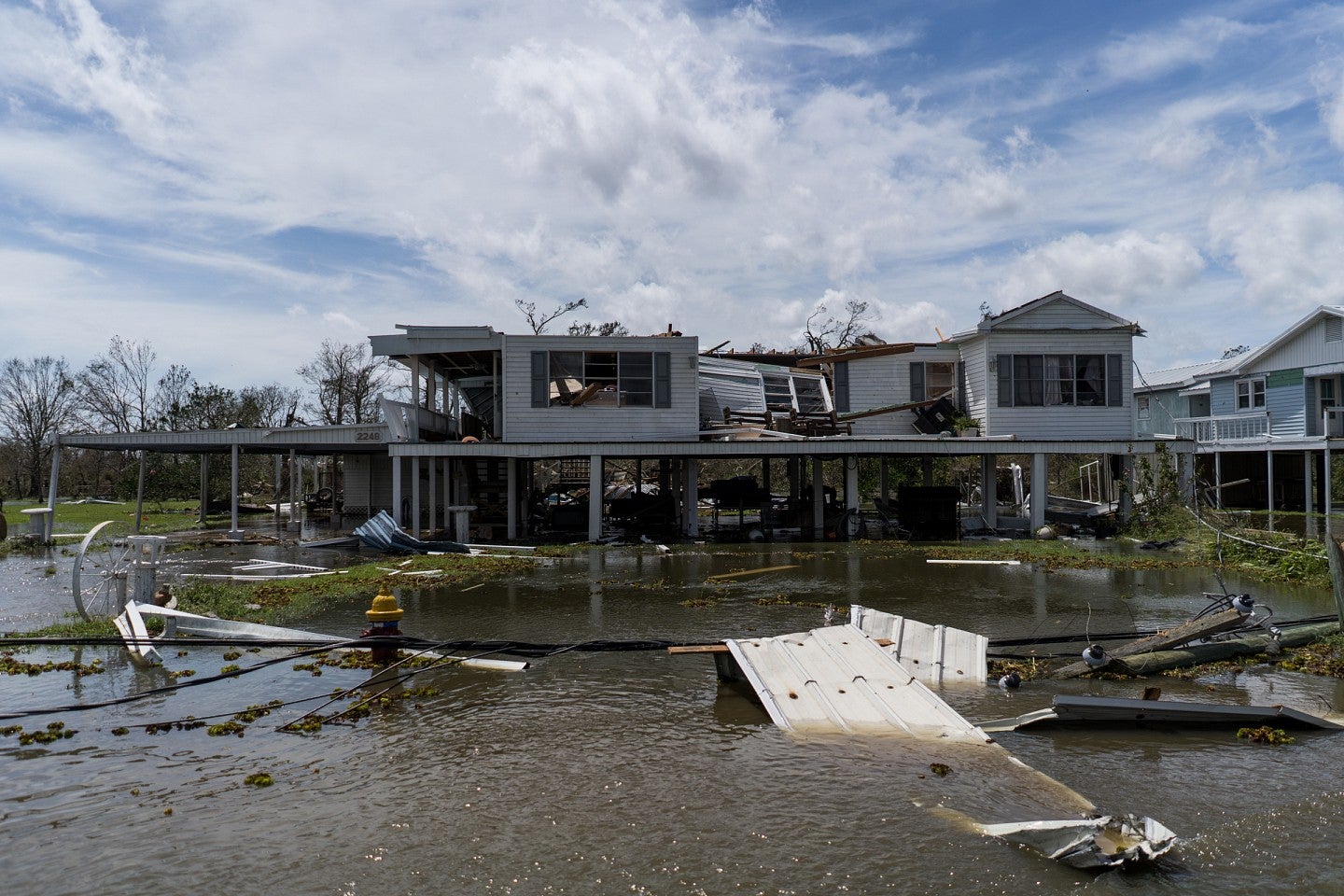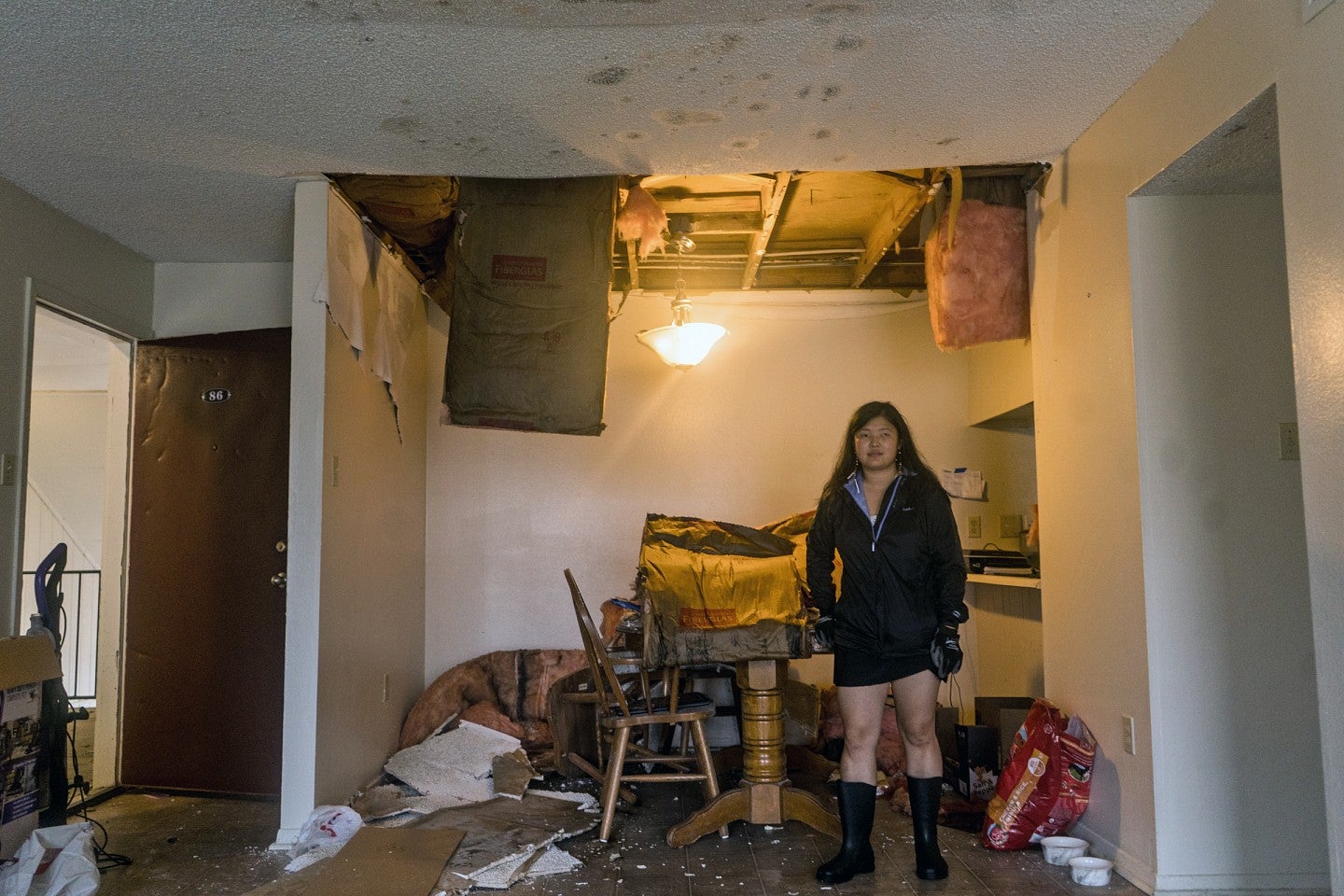
Once Hurricane Ida had passed, Kezia Setyawan ’20 returned to an apartment ripe with the sour smell of molding wood. Photo courtesy of Kezia Setyawan.
On a hot July day in South Louisiana, Kezia Setyawan ’20 met with members of the United Houma Nation to celebrate the opening of their new tribal administrative building.
Two months later, Hurricane Ida tore through the community, leaving their dining room caved in and displacing thousands of residents.
Setyawan was one of them. Less than a year after she graduated from the University of Oregon School of Journalism and Communication (SOJC) and left Oregon to join the staff of the Daily Comet, a sister newspaper of The Courier in Houma, the newly minted reporter found herself living through the aftermath of a hurricane while also covering it.
With her own apartment uninhabitable and no bed to call her own, she realized she needed to know the answers to some difficult questions: What do you say to someone living through the worst days of their lives? And would the nation treat her newfound community, one of the hardest hit by the hurricane, as expendable?
“I think it’s really interesting that in my job, covering this post-Ida time, I’m not only documenting the worst times of people’s lives as a working professional, but I’m also being failed by the same system as an individual,” she said. “It’s allowed me to start interrogating the reasons why I’m doing this. Am I just serving capital, or am I serving the community?”
Setyawan — an SOJC Honors student who traveled to Indonesia and Singapore to document the lives of relatives and friends for her thesis on how personal narratives support or create tension in academic work — has never known a pre-pandemic professional life. Even by post-pandemic standards, her career so far has been anything but normal.
After completing her Charles Snowden Program for Excellence in Journalism internship at the Malheur Enterprise in Vale, Oregon, Setyawan landed her first job on the Louisiana bayou, where she fell in love with the sunsets and the people who were so rooted in their environment and culture.
“I personally have never had ambitions of going to a big city or a big paper,” she said. “I think journalism can be done anywhere, and I’m happy that this is my first job out of college because it’s so interesting.”

A building in Pointe-aux-Chenes lost its roof during Hurricane Ida. The storm displaced nearly 13,000 households in Houma and the surrounding area. Photo by Kezia Setyawan.
Her foray into the South took a turn, however, when Hurricane Ida began brewing in the Gulf. As the storm approached, Setyawan and the rest of the newsroom evacuated two hours west to Lafayette. Although she didn’t witness Ida’s full fury, the buildup and subsequent destruction felt surreal.
“Coming from Oregon, it was kind of shocking,” she said. “The destruction comes fast, but it’s also very slow because there’s so much anticipation. I think that really plays with your head. It’s just a horrible feeling.”
Once the storm had safely passed, she returned home to an apartment ripe with the sour smell of molding wood and a hole in the bathroom ceiling where the insulation had fallen in. Outside, she was traumatized by the sight of debris clogging the neighborhood streets where she normally walked her dog.
“It’s a shock, seeing the sceneries and landscapes you’ve lived in for months and taken for granted destroyed. There’s so much debris everywhere.”
Without her apartment in Houma, Setyawan spent the next few weeks commuting from Lafayette. Each morning she made the two-hour drive with a list of places to visit and people to talk to. After a full day of reporting — grappling with issues such as spotty cell phone service and lack of power — she would make the drive back to Lafayette, file her stories and go to bed.
“Then I would do it again. It was a three-days-on, three-days-off type of scenario. I didn’t really take days off, though,” she admitted. “I didn’t eat for the first week, really. I found food really disgusting. You’re running on adrenaline at that point.”

SOJC alum and journalist Kezia Setyawan ’20 and her neighbors were evicted from their homes after Hurricane Ida destroyed their apartment building. Photo by Harrison Jensen.
Once the initial shock had passed, the real problems set in. As Setyawan and her neighbors sank into the gap between short-term relief and long-term recovery efforts, the questions — and anger — began to mount.
“Objectivity doesn’t work in this scenario,” she said. “As a journalist, I know my skills and I know I’m covering things fairly and accurately. But I don’t think you can justify the fact that people in my area don’t have water for weeks or power for months. You get over trying to appear objective and begin to interrogate how institutions of power have failed people in the area.”
Coming from the School of Journalism and Communication, where she helped tell the story of a changing Willamette Valley in Torsten Kjellstrand’s yearlong Roots & Rivers class, Setyawan is well-versed in the impacts of climate change on vulnerable communities. She also understands firsthand the importance of close community ties when navigating a climate-related crisis.
“The SOJC has been really valuable in terms of building interpersonal relationships,” she said. “I’m still in contact with a lot of my professors, and I keep in touch with members of my cohort.”
Despite all the hardships, Setyawan has no intention of leaving Houma for greener pastures — although she admits feeling some resentment toward the “parachute journalists” from larger media outlets who swoop in with big-city resources yet fail to produce in-depth articles or dive deeper than her own reporting.
“I’m grateful that in my position as a displaced journalist covering displaced people, I’m fully empathetic to what people are going through. I inherently understand better than other journalists who are sleeping in their own beds,” she said. “I think that my place with my newspaper is that I want to be as much of an advocate for the community I’m serving as I can. I want to make sure good, accurate information gets to them with as few barriers as possible.”
—By Nicole Krueger ’99, SOJC
Nicole Krueger ’99 is a copywriter and former newspaper reporter whose work has appeared in publications such as The Tennessean, the Statesman Journal and Empowered Learner magazine.
Kezia Setyawan's work at Houma Today can be viewed here. Read her op-ed: After Ida, will you treat our communities as expendable?
